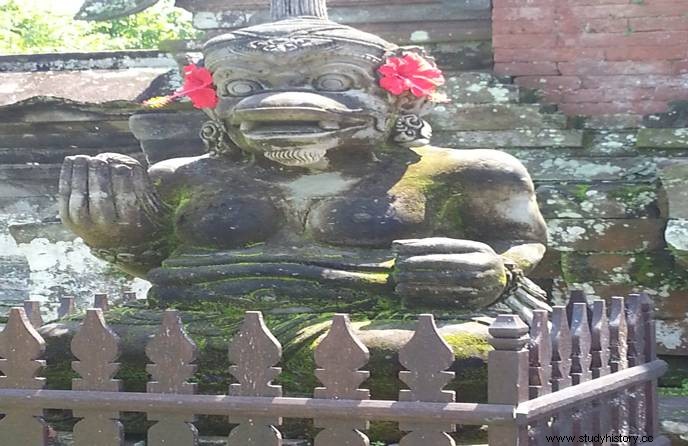
Borobudur Mahayana Buddhist Monastery is located in Magelang town of Central Java Province. This too, like the Parambanan Shiva Temple and the Plaosan Buddhist Monastery, was originally built in the 9th century AD. At the time it was built, it was the largest Buddhist monastery in the world. Its place is still safe today. It is built on six square platforms, out of which the upper part of three platforms is circular. 2,672 Relief panels with engraved statues and 504 Buddhist statues have been found in this vihara. It has 72 Buddha statues with stupas around the main dome.
It was built during the reign of Shailendra dynasty in the 9th century. The structure of the monastery is in line with Javanese Buddha architecture, which is a blend of ancestral worship and Buddhist nirvana concept of Indonesian Javanese native people.
The influence of Gupta architecture of India's 4th-5th century is also visible in the architecture of the vihara, but Indonesian architectural elements are present in sufficient quantity, due to which it should be considered as an Indonesian architectural structure. Its composition is circular in the form of a huge stupa and the entire construction looks like a monument.
In fact, it is the place of worship of Lord Buddha and the world-famous Buddhist pilgrimage site. Surrounding this monument are three symbolic levels of the Buddhist cosmology called Kamadhyana (the world of desire), Rupdhyana (the world of forms) and Arupdhyana (the formless world). The viewer, circling these three levels, reaches its apex, that is, the state of enlightenment. The monument has an elaborate arrangement of stairs and corridors on each side. On exiting through the corridors, the visitors are automatically guided to move forward through 1,460 inscriptions (Narrative Relief Panels) and Stambh-Veshtans (curved bars on the stairs - thsanejatankame). The construction work of this monument started in the 9th century, the main constructions were completed only then but some construction continued in the subsequent centuries.
